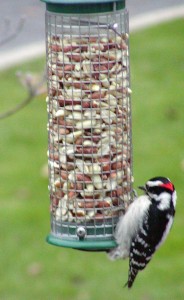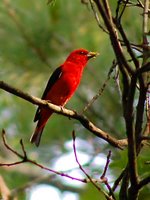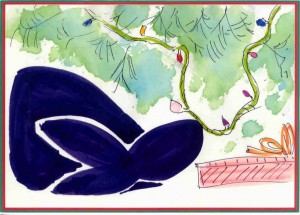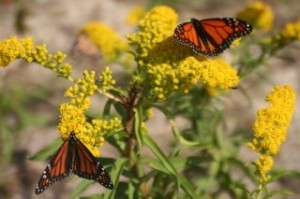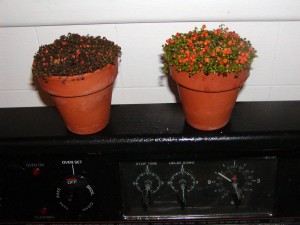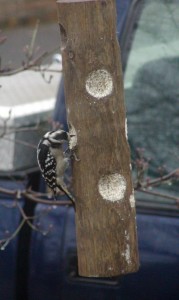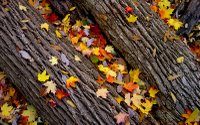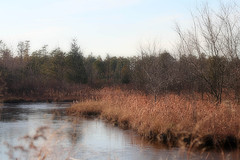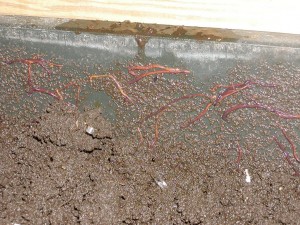 It dawned on me this afternoon that I haven’t checked on the worms in the basement for a while. I add food to the bin once a week, but lately that’s it. I’ve not been a very good landlord, it seems.
It dawned on me this afternoon that I haven’t checked on the worms in the basement for a while. I add food to the bin once a week, but lately that’s it. I’ve not been a very good landlord, it seems.
If you need reminding, I keep a worm bin in the basement to compost kitchen scraps. It’s a small tray-type bin and the worms are red wigglers. It’s not nearly as disgusting as it sounds. I collect leftover vegetables and greens, coffee grounds, and eggshells in a small copper composting bucket I keep in the kitchen and once a week empty it into the bin for the worms. I cover the food with a layer of shredded junk mail so there is no smell to attract other insects. Every few months the worms have made enough compost for me have a few cups worth of natural fertilizer for my houseplants. Mostly I save the compost up and use it in the spring when I repot.
If things are working as they should there is no smell or trouble with it at all. I usually add food to the bottom tray until it looks nearly *done* and then add food to the next tray up, with the idea that the worm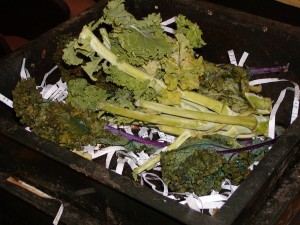 s will move upward to find the food, leaving the compost in the tray below free of worms.. My worms didn’t want to migrate upward like they were supposed to, so this year I’ve been adding food to the bottom tray, hoping that they’ll be willing instead to migrate downward. So far it seems to be working, except for the few worms in the opening photo who look like they’re trying to migrate up and out of the bin! Excess moisture has always been a problem for me and even that top tray of nearly finished compost is wetter than it should be.
s will move upward to find the food, leaving the compost in the tray below free of worms.. My worms didn’t want to migrate upward like they were supposed to, so this year I’ve been adding food to the bottom tray, hoping that they’ll be willing instead to migrate downward. So far it seems to be working, except for the few worms in the opening photo who look like they’re trying to migrate up and out of the bin! Excess moisture has always been a problem for me and even that top tray of nearly finished compost is wetter than it should be.
I suspect that adding food to the lowest tray, so near to the bottom of the set-up, is what’s causing the backup of excess moisture in the system. There’s a spigot on the bottom to drain away the liquid, so I’ve left it open with my copper bucke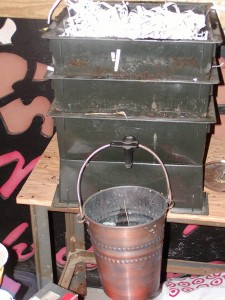 t beneath it to hopefully dry things out. They say that you should be able to use the liquid that drains out as *compost tea*, but I find it to be so foul-smelling that I would never want it on the houseplants anywhere near where I was sitting! Usually I’ll just dump it outside on the vegetable garden far away from the house.
t beneath it to hopefully dry things out. They say that you should be able to use the liquid that drains out as *compost tea*, but I find it to be so foul-smelling that I would never want it on the houseplants anywhere near where I was sitting! Usually I’ll just dump it outside on the vegetable garden far away from the house.
I decided to try adding some dry leaves as bedding, in addition to the shredded paper and junk mail, for added minerals for the worms. The instructions that came with my bin suggest adding all sorts of oddball things. Every so often I try something new and hope for the best. The worms don’t really eat the garbage; instead they feed on the microorganisms that decay the food – so I won’t add anything that is likely to rot and fester in there for too long – no meat or oil in any form. Once in a while I’ll treat them with some moldy bread or baking yeast sprinkled on top of the working tray, but that’s it. They seem to be happy with old bunny greens. In fact, I see lots of little red worms if anybody wants to give vermicomposting a try!
